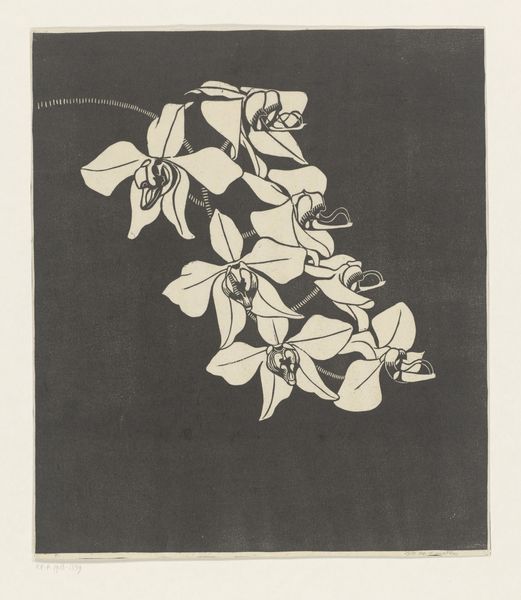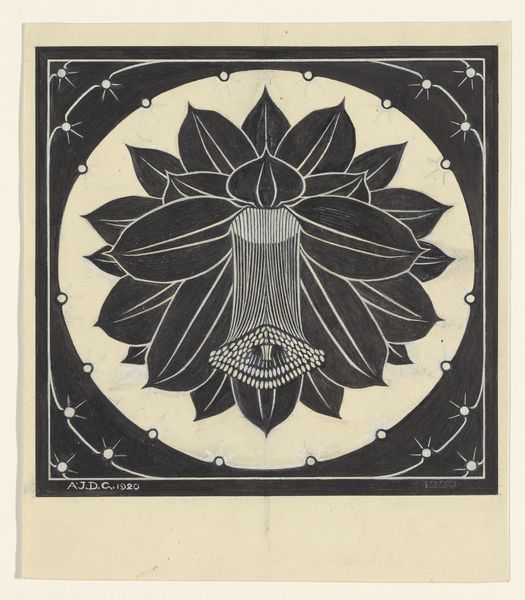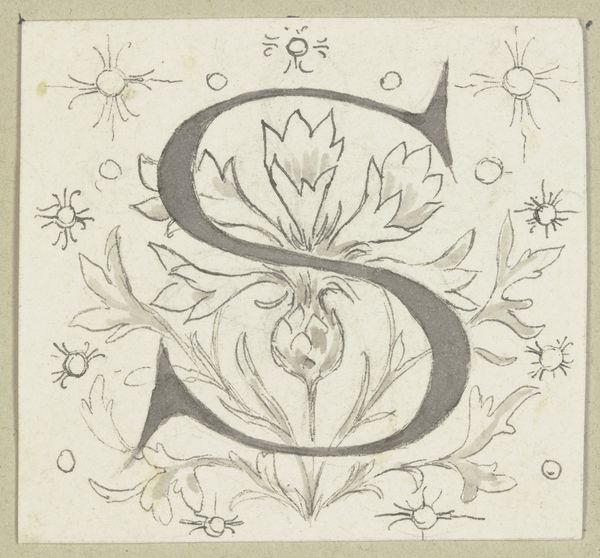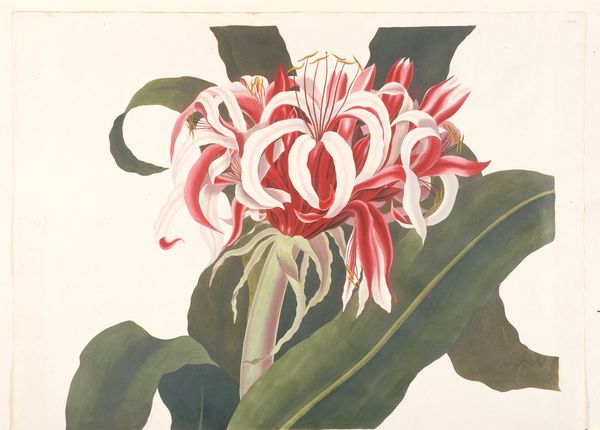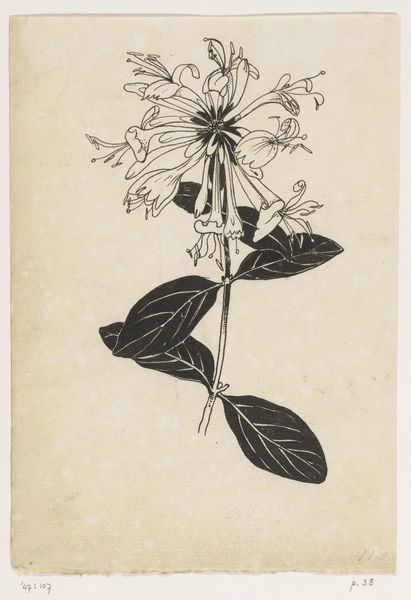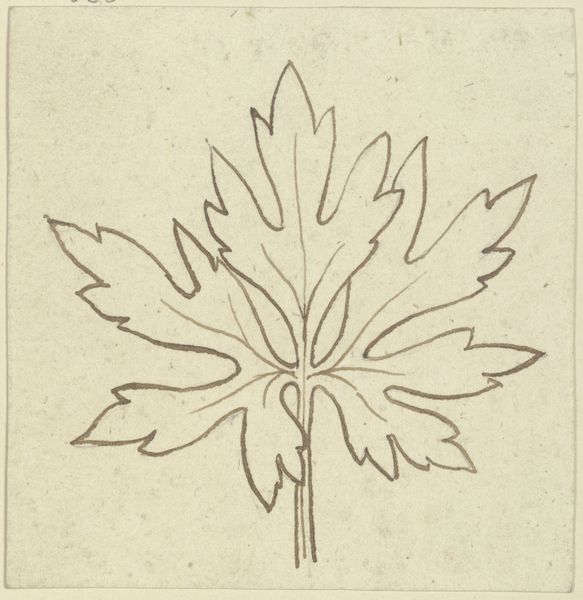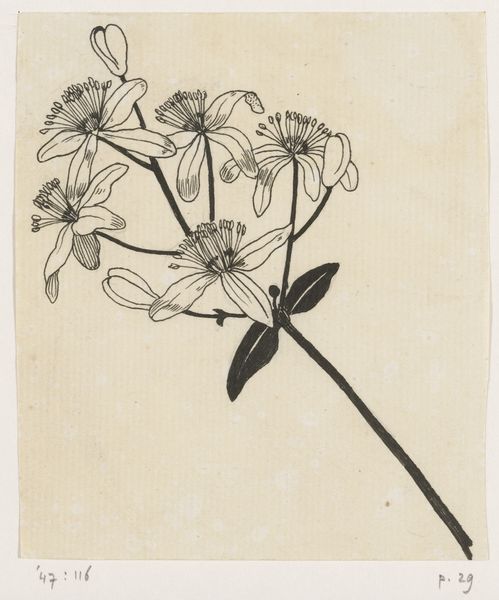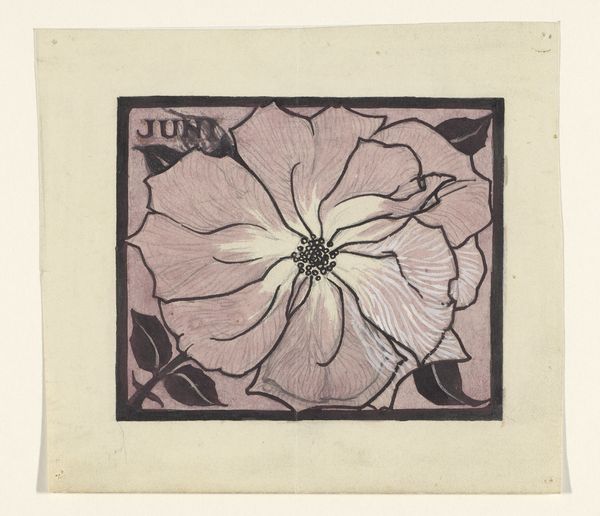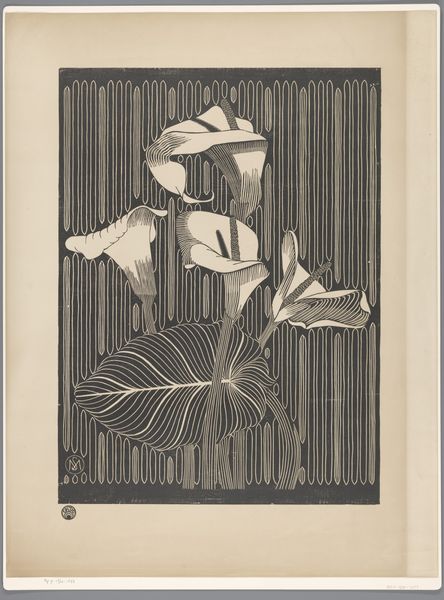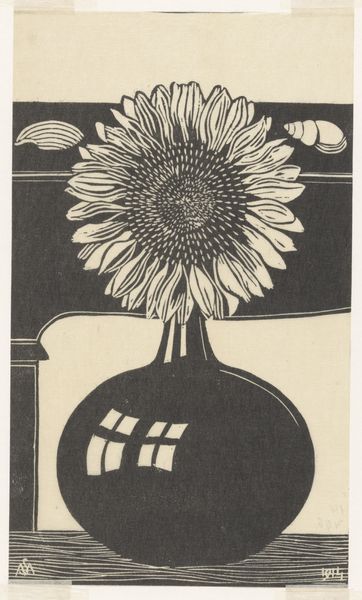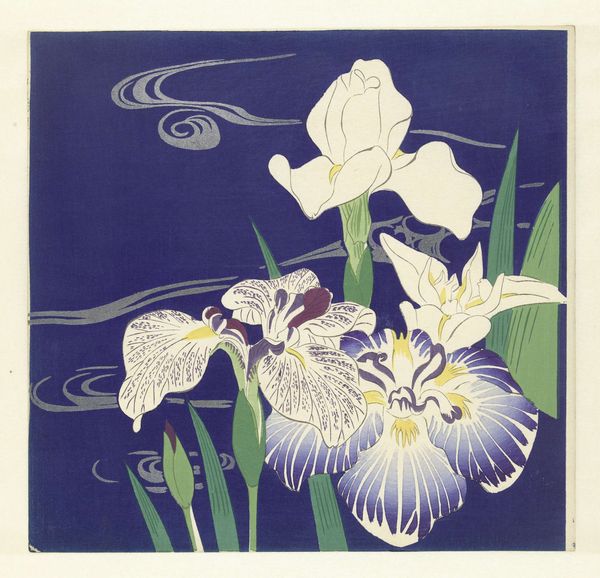
graphic-art, print, linocut
#
graphic-art
#
art-nouveau
# print
#
linocut
#
linocut print
Dimensions: height 178 mm, width 166 mm
Copyright: Rijks Museum: Open Domain
Curator: I find myself immediately drawn to the graphic clarity of this linocut. The stark black and white contrast, softened only by that delicate terra cotta line, it really gives the single flower a bold, almost monumental presence. Editor: Monumental is an interesting choice of words. Looking at this, it makes me think about the social context of printmaking at the turn of the century. Julie de Graag created “Godetia” in 1919, a period when women were pushing against the boundaries of traditional art forms and challenging male dominated hierarchies. Linocut was much more accessible than other techniques, no heavy machinery or long apprenticeships needed, providing greater artistic agency. Curator: I see how accessibility would play a part here, allowing more marginalized voices to produce images more cheaply. What do you make of the single, very erect, stigma within the flower itself, in an eye-catching red? Editor: To me, the stigma becomes the central symbolic anchor, pulling so many underlying themes from different eras into alignment. There's a visual echo of pre-Christian fertility figures in this almost blatant focus on that one part of the flower’s anatomy, but it's filtered through the more decorative, refined aesthetic of the Art Nouveau period. Curator: It's as if she's simultaneously celebrating and subverting those older archetypes, drawing our attention to both the potency and the artifice involved. In a broader sense, the deliberate reduction to simple shapes encourages us to really consider what aspects de Graag has emphasized through inclusion or omitted entirely. The graphic style serves to really simplify our perceptions. Editor: This reduction you are describing also resonates with Art Nouveau's interest in stylized, almost abstracted depictions of the natural world, a reaction against industrialization perhaps, where handcrafted design reasserts its value and place in a rapidly changing world. By reinterpreting classic and current movements, female printmakers claimed space within new creative visual and social lexicons. Curator: Thank you. Thinking of those female printmakers of the 20th century and their contributions, that is a context to consider when experiencing work from this period. Editor: Agreed, it's these interdisciplinary connections that transform how we receive and appreciate the artworks!
Comments
No comments
Be the first to comment and join the conversation on the ultimate creative platform.
